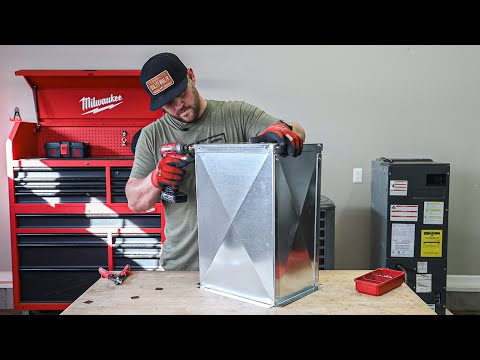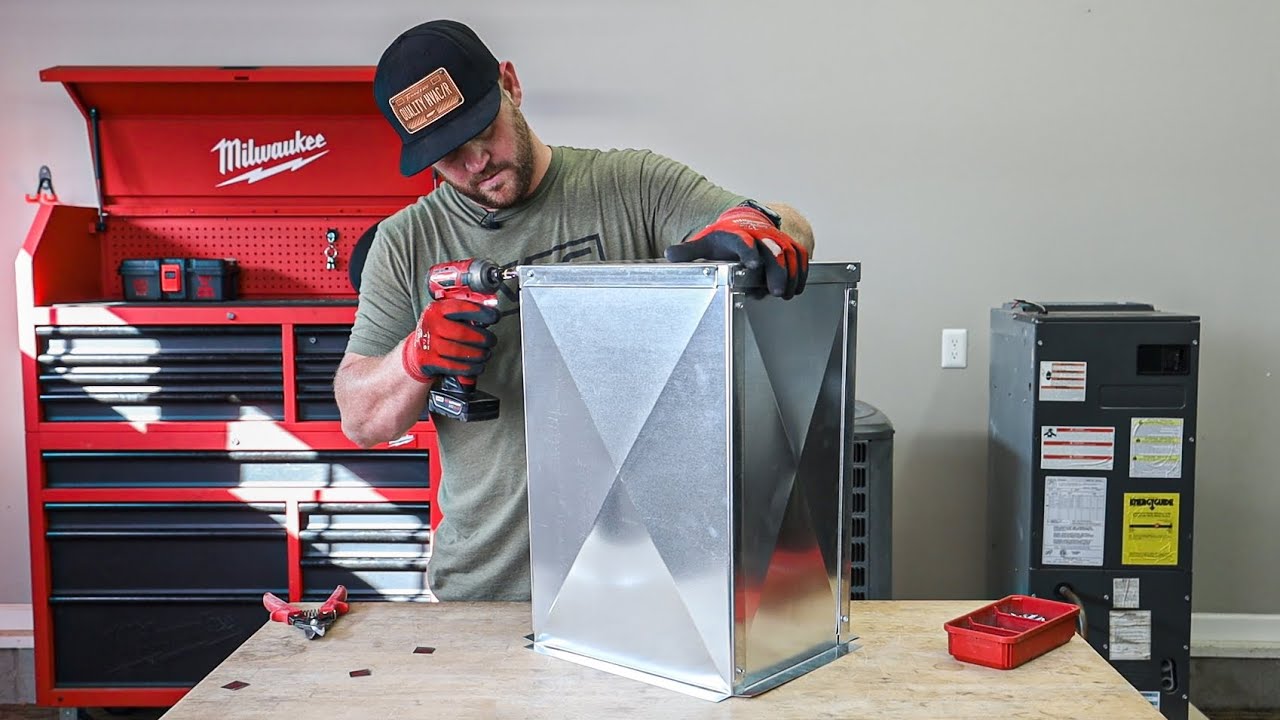HVAC sheet metal fabrication is a fascinating and intricate process that brings together the worlds of engineering, craftsmanship, and innovation. With expert precision and skill, highly trained professionals transform raw sheet metal into custom-built components that play a crucial role in heating, ventilation, and air conditioning systems. Every step of the fabrication process, from cutting and bending the metal to welding and finishing, requires meticulous attention to detail and a deep understanding of HVAC system dynamics. Quality is at the core of every fabrication project, ensuring that the final product meets the highest standards of durability, efficiency, and performance. Whether it’s creating ductwork, ventilation systems, or specialized components, experience and expertise are paramount in delivering exceptional results. HVAC sheet metal fabrication not only showcases the artistry of shaping metal but also exemplifies the fusion of science and engineering. The possibilities are endless, as innovative techniques and technologies continue to push the boundaries of what can be achieved. So, if you are fascinated by the intersection of creativity, precision, and practicality, HVAC sheet metal fabrication will undoubtedly capture your interest and leave you in awe of the remarkable craftsmanship involved.

The Importance of HVAC Sheet Metal Fabrication
HVAC (Heating, Ventilation, and Air Conditioning) systems play a crucial role in maintaining a comfortable indoor environment. While the functionality of these systems largely depends on various components, one of the most critical aspects is sheet metal fabrication. This process involves creating custom parts and components from sheet metal for HVAC systems. In this article, we will explore the significance of HVAC sheet metal fabrication and its benefits.
1. Precision and Customization
HVAC sheet metal fabrication offers unparalleled precision and customization. Each HVAC system requires different parts and components to fit specific spaces and meet unique requirements. By utilizing sheet metal fabrication techniques, HVAC professionals can create highly accurate and customized components that seamlessly integrate with the system.
Whether it’s ductwork, plenums, or exhaust hoods, the ability to fabricate sheet metal ensures a perfect fit and optimal performance. This precision eliminates gaps and leaks, enhancing energy efficiency and reducing unnecessary strain on the system. Additionally, custom fabrication allows for modifications and adaptations to suit any design changes or updates, making the HVAC system highly versatile.
2. Durability and Longevity
One of the primary advantages of HVAC sheet metal fabrication is the durability and longevity it offers. Sheet metal, such as galvanized steel or aluminum, possesses exceptional strength and resistance to wear and tear. Fabricated components made from these materials can withstand harsh environmental conditions, ensuring the HVAC system’s durability over time.
Furthermore, sheet metal fabrication techniques, such as welding and sealing, enhance the structural integrity of the components. These processes create strong and seamless joints that prevent leaks and reduce the risk of failure. The use of high-quality sheet metal and proper fabrication techniques significantly extends the lifespan of HVAC systems, making them a cost-effective investment in the long run.
3. Improved Energy Efficiency
HVAC systems account for a significant portion of energy consumption in commercial and residential buildings. However, by utilizing HVAC sheet metal fabrication, energy efficiency can be greatly improved. Custom fabrication ensures that each component fits precisely, eliminating any gaps or leaks that may result in energy loss.
The tight seals achieved through sheet metal fabrication reduce air leakage, preventing conditioned air from escaping and unconditioned air from entering the system. This enhanced energy efficiency not only reduces utility bills but also minimizes the carbon footprint of the building. Additionally, fabricated sheet metal components can be designed with insulation materials, further enhancing energy efficiency.
4. Cost-Effectiveness and Time Efficiency
Contrary to popular belief, HVAC sheet metal fabrication can be cost-effective and time-efficient. While the initial fabrication process may require skilled labor and specialized equipment, the long-term benefits overshadow the upfront costs. Fabricated components offer a longer lifespan, reducing the need for frequent replacements and repairs.
Moreover, the customization offered by sheet metal fabrication eliminates the need for on-site modifications and adjustments. This saves considerable time during installation, as the components are designed to fit seamlessly. Additionally, precise fabrication ensures optimal system performance from the start, reducing the likelihood of costly breakdowns or malfunctions.
5. Compliance with Regulations and Standards
Modern HVAC systems must adhere to various regulations and standards to ensure safety and efficiency. HVAC sheet metal fabrication plays a vital role in achieving compliance with these regulations. Fabricated components are designed to meet specific industry standards and building codes, ensuring that the HVAC system operates safely and efficiently.
By utilizing sheet metal fabrication, HVAC professionals can create components that meet the required specifications for fire resistance, corrosion resistance, and airflow capacity. Compliance with these regulations not only guarantees the safety of occupants but also ensures that the HVAC system operates at its optimal capacity.
Conclusion
HVAC sheet metal fabrication is a critical aspect of building and maintaining efficient HVAC systems. The precision, customization, durability, energy efficiency, cost-effectiveness, and compliance it offers make it an indispensable process for the industry. By employing HVAC sheet metal fabrication techniques, professionals can ensure optimal system performance, reduce energy consumption, and enhance the overall comfort of indoor spaces.
“Craft an Impressive Plenum Box: Master DIY HVAC Ductwork with Basic Tools”
HVAC Sheet Metal Fabrication
HVAC Sheet Metal Fabrication
| Material | Thickness (inches) | Usage | Benefits |
|---|---|---|---|
| Galvanized Steel | 0.02 | Ductwork, air vents | Durable, corrosion-resistant, cost-effective |
| Aluminum | 0.04 | Heat exchangers, evaporator coils | Lightweight, excellent thermal conductivity, resistant to rust |
| Stainless Steel | 0.03 | Commercial kitchen hoods, exhaust systems | High strength, fire-resistant, hygienic |
| Copper | 0.025 | Refrigerant lines, heat sinks | Superior heat transfer, antimicrobial properties |
HVAC sheet metal fabrication involves the utilization of various materials, each selected based on specific requirements and applications. Galvanized steel, with a thickness of 0.02 inches, is commonly used for ductwork and air vents. Its durability, resistance to corrosion, and cost-effectiveness make it a preferred choice in HVAC systems.
Aluminum, often measuring 0.04 inches in thickness, is ideal for heat exchangers and evaporator coils due to its lightweight nature and exceptional thermal conductivity. Additionally, its resistance to rust further enhances its suitability for HVAC applications.
Stainless steel, with a thickness of 0.03 inches, finds extensive use in fabricating commercial kitchen hoods and exhaust systems. Its high strength, fire-resistant properties, and hygienic nature make it an excellent material choice for demanding environments.
Copper, measuring 0.025 inches in thickness, is commonly employed for refrigerant lines and heat sinks. Its superior heat transfer capabilities and antimicrobial properties contribute to its popularity in the HVAC industry.
By carefully selecting the appropriate materials and leveraging skilled sheet metal fabrication techniques, HVAC professionals ensure the production of reliable and efficient components for heating, ventilation, and air conditioning systems.

